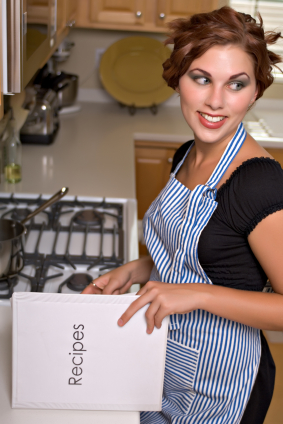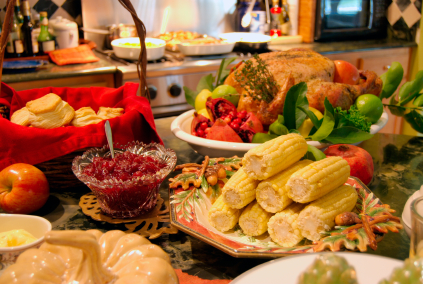Did you know that every time you eat out it’s pretty much guaranteed you will be consuming more calories than if you prepared your own meal? A recent study published in the IDEA fitness journal stated that when people ate out they averaged 200 more calories per meal. I believe them!
Please understand, I’m a big fan of going out to eat. It’s part of our culture, and I think everyone should take advantage of the fabulous restaurants in their area. However, several years ago I learned that the average American eats out four to five times per week. This made me realize that the calorie overload could add up quickly for anyone frequenting restaurants this often.
I also understand why people are eating out this much. After a long day at work, cooking dinner can sound daunting and unappealing. You want something simple that tastes good, and it’s all too tempting to swing by your favorite take out joint or restaurant.
However, meal planning and preparing your own food is one of the key ingredients to weight loss/management without dieting. It’s how my household is able to enjoy eating the foods we like without gaining weight.
Does meal planning mean that you need to go to culinary school and become a chef, or that you have to eat the same meal five days in a row? No!
It does mean that you will spend a little time up front before your week begins. The 30 minutes you spend meal planning will actually ending up saving you time. No more daily trips to the store or a restaurant. Not only will planning your menu save you time, it saves you money and helps you avoid throwing away food that went bad sitting in the fridge.
Just between you and me meal planning was not something I used to do. I would get home from a long day of work and throw some chicken or fish in the oven while the rice and veggies cooked together in a steamer. I really enjoyed this meal. It was easy and I knew it was healthy for us, but eventually my husband and I got burned out on eating the same thing five nights a week.
That burnout inspired me to take my knowledge from the fitness industry and teach myself how to meal plan. I started creating weekly menus, and learned to cook healthy interesting meals for our family. It wasn’t super hard, it just took planning and following recipes. That’s why I know you can do it too.
Here are eight simple steps to help you start meal planning right away.
1) Make a quick plan. Make a list of what you want to eat for dinner, lunch, breakfast, and snacks for the next seven days. Look at your calendar to see if you have any planned dinners, parties, or lunches when you will be eating out.
2) Get inspired! If you like to cook or want to learn how, try using light recipes from the web, cookbooks, and/or magazines to inspire you. Cooking Light is my favorite. EatingWell is another option. Go through the magazines or the website. Let the pictures of the meals inspire you to try new recipes.
If cooking is new for you, pick the 20 minute recipes to start. Even if you are a seasoned cook, you may want to stick to the short recipes on your busier days and save the project meals for your days off when you have more time.
3) Make quick and delicious no cook meals. Rather not cook? Assemble prepared food that is fresh. Try things like a roasted chicken, pre-cooked rice and pre-washed lettuce for a salad. Add some frozen organic vegetables on the side.
These are great meals when you’ve had a crazy day and need to feed you and/or your family quickly before the blood sugar starts dropping.
4) Frozen can be your friend. Try frozen organic pizza with a salad. Be sure to pay attention to serving sizes. A healthy frozen pizza has fewer calories than restaurant pizzas.
5) Write it down. Once you’ve decided what you will eat for the week, make a shopping list and write everything down before you go to the store.
6) Make extra. Use leftovers for lunches or freeze appropriate portion sizes for meals later in the month. For example eat meals that you froze during week one in week three. This allows you to save time and stay on track without growing tired of the meal because you ate it for four days straight.
7) It’s okay if you need to outsource. You may discover that cooking every night is a challenge. If so, consider these great ideas:
Order meals from a company like MagicKitchen.com. The food is made fresh and delivered to your doorstep. If you think that may be too expensive, do a little calculating. You may find it a lot less expensive than eating out. You can also try doing a search for local businesses in your area providing meal services. Imagine what it would be like to have all of your meals planned and ready to go in the freezer.
8) Stay consistent! Over time you will become an ace at meal planning and will learn what works for you. Stick to it and it will become as natural as brushing your teeth!
If you have ANY questions or comments please feel free to leave them below!
Blessings,
Jennifer Ledford




